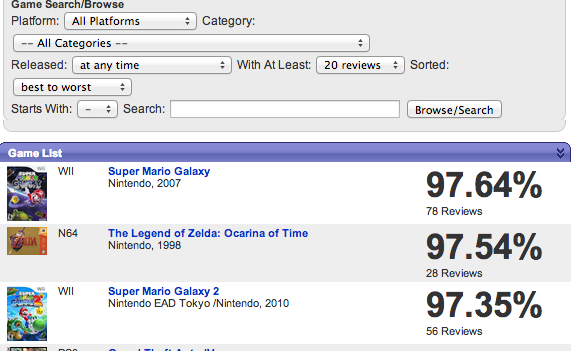

Game Rant’s William Case reviews The First Templar
After the immense success of Ubisoft’s Assassin’s Creed series, to throw in the name “Templar” anywhere in another video game tends to bring the image of men bounding over rooftops, silent kills and church intrigue. It’s somewhat unfortunate that this really isn’t how it happened back in the 14th Century, but it’s nice to pretend every now and again.
Though being that gamers like to live in a factual universe, Haemimont Games (Tropico 3) figured it would be wise to bring a little historic accuracy to the world with their latest title, The First Templar. Set during the time of the First Crusade, where the church is beginning to lose its already-tenuous grip in the Middle East, the Inquisition is beginning to rise and make its face known. While all of that makes for a rather interesting story, the delivery and interpretation of these historical events in The First Templar leaves a little more to be desired.
Ubisoft has already demonstrated in their franchise how the Templars can been seen as malicious and advantageous, so here we see more of the morality and pragmatism of the order through our hero, Celian. Cavorting through fairly accurate depictions of places like Cyprus, or going sword-to-sword during the Siege of Acre Celian, players will uncover a conspiracy inside the church that will lead the protagonist to the Holy Grail.
Considering that there’s something of a war going on, Celian will need to be prepared with sword, shield and dirk to defend him and whoever needs the hand of God. It’s here that the best and potentially the most annoying parts of the game arise: combat and leveling. The First Templar demands that players face hordes of enemies incessantly, working a combo system that is both simple and repetitive. Sure, it’s mindless and the enemies have easily discernable patterns, yet fighting for 10-plus hours will leave players potentially bored.
Luckily for you, you won’t be alone for most of it. The First Templar not only places heavy emphasis on combat, but cooperative gameplay as well. Whether having a friend on local or otherwise, players can have help to knock around enemies from point A to B. The downfall is that the partner’s weapons and skill trees are all superficial: it doesn’t matter how their abilities are stacked, it’s all going to end up being the same thing come the sword strike.
Speaking of skill trees, leveling up a character in The First Templar is rather interesting. Breaking down into four different distinctions — Health, Strength/Defense and two different styles of attack — the tree will slowly unlock, granting players added bonuses on health, an additional combo strike or more Zeal, which is used to revive partners or strike enemies with a devastating charge attack. Yours for whatever reason seems to be the only skill set that matters in the game, leaving your friend to deal with their own insecurities.
Another little issue that – depending on your luck — crops up is the AI (if playing solo). They may help, or just as easily may give players something else to worry about. Fighting or moving around within the busy — and oftentimes burning — cities and towns, the AI will get caught up on barrels, trees, walls and anything else around as their energy gets drained away while fighting off fifteen enemies solo.
Sadly, your AI partner won’t be the only one that will get stuck on the surrounding buildings. While the areas are well-designed for the time period, you’ll find that corners, walls, kiosks, and everything in between will slow you down as well. It’s a shame, as the open-ended levels are perfect for the area (it is the Middle East after all). This problem isn’t helped by the mini-map which is utterly useless, providing directions towards waypoints, yet not showing what’s in the way… And what’s in your way is usually congested, forcing players to repeatedly backtrack or double-back.
Though all of that openness helps add a plethora of sidequests, activities and subtext to add to the adventure. Most of these little jaunts will provide players with pieces of history on the actual events during the Crusades, bonus experience, or help for later on during quests when in need of revives or money. The best little tidbit that was included however, was The Arena.
Set up as a gladiator-styled battle, players learn about the mysterious Byzantine, the ruler of The Arena who sets the player against other combatants again and again until each round is won. While it would sound pedantic, it becomes something of a mini-mystery that pulls you into its little story, almost more then the actual plot.
And that’s really the story of The First Templar: it’s overdone and tired. It does have its moments where it shines such as The Arena, while others are either strained or overlooked. It may be that with someone else already stamping their mark on the title of “Templar,” Haemimont Games were a little intimidated to really impress. So if you’re hoping to pass your next history test while enjoying a jaw-dropping adventure… well, you may at least pass your test.
The First Templar is out May 17th for Xbox 360 and PC.




 Destiny Patch 2.0 MegaGuide: List Of All Bugs, Glitches and Errors
Destiny Patch 2.0 MegaGuide: List Of All Bugs, Glitches and Errors 6 Places To Find Out What Are The Best Video Games Ever
6 Places To Find Out What Are The Best Video Games Ever Destiny How to: Path of the Voidwalker and Sunsinger Warlock Quests
Destiny How to: Path of the Voidwalker and Sunsinger Warlock Quests How to Enhance Battlefield: Hardline Beta PC Performance, Gameplay & Graphics Tweak Guide
How to Enhance Battlefield: Hardline Beta PC Performance, Gameplay & Graphics Tweak Guide How to fix Call of Duty Advanced Warfare PC Launch, Loading, Slide issue, Remove Toggle Scoreboard, Intel Graphics Adapter and more issues
How to fix Call of Duty Advanced Warfare PC Launch, Loading, Slide issue, Remove Toggle Scoreboard, Intel Graphics Adapter and more issues